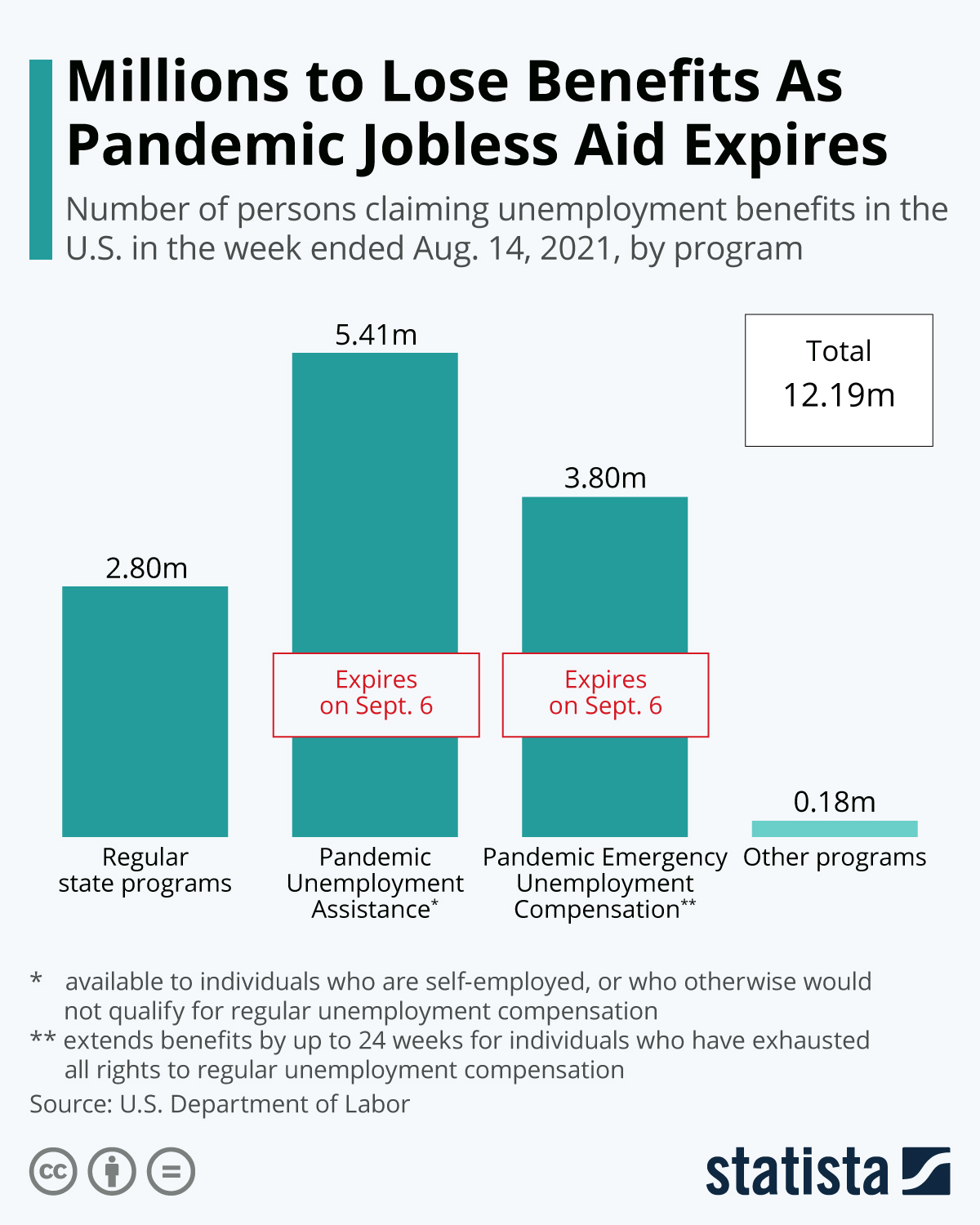When Congress passed the American Rescue Plan in March, extending pandemic-related unemployment aid until Labor Day, millions of Americans breathed a sigh of relief. Back then, almost 14 million people depended on the emergency programs. And while the labor market situation has improved significantly since then, the new cut-off date is almost here, leaving millions in doubt of what is possibly their only income.
In addition to the $300 weekly supplement to state unemployment benefits, both the Pandemic Unemployment Assistance program, which is available to individuals who are self-employed or who otherwise would not qualify for regular unemployment compensation, and the Pandemic Emergency Unemployment Compensation program, which extends benefits by up to 24 weeks for those who have exhausted regular unemployment aid, are due to expire on September 6.
According to data published by the U.S. Department of Labor this week, 12.19 million Americans still received unemployment benefits in the week ended August 14. And while the number of people receiving help through regular state programs has fallen to 2.8 million, from a peak of more than 22 million in May 2020, more than 9 million Americans still relied on aid provided through either of the two aforementioned programs, as many who lost their job during the first wave of the pandemic have exhausted their regular unemployment insurance benefits or never qualified in the first place.




















